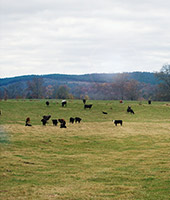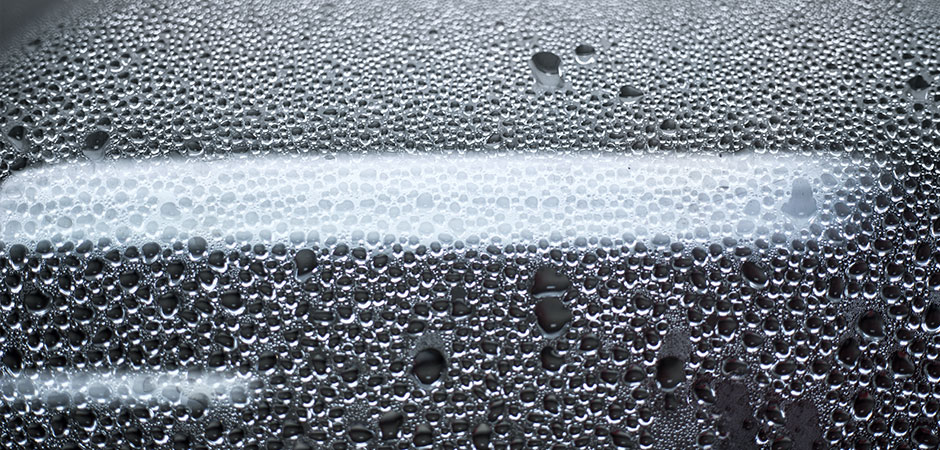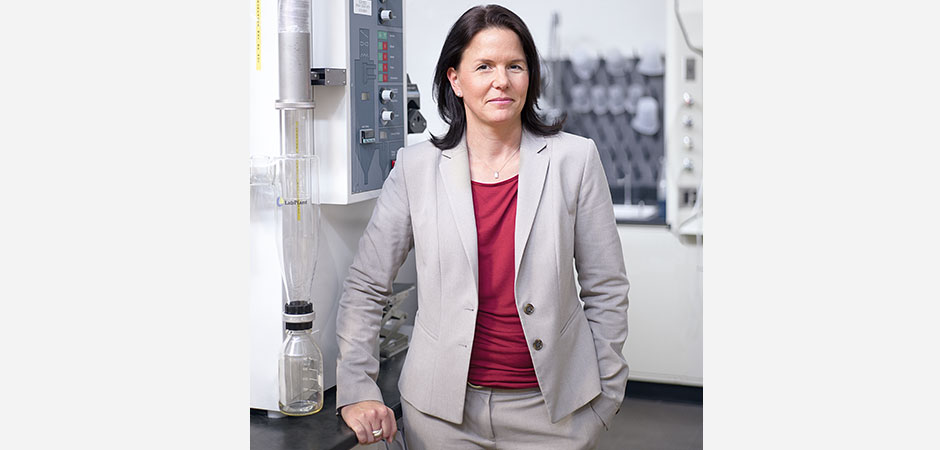Eddyville – The Treasure of Eddyville
WACKER’s production of cyclodextrins takes place amid the cornfields of the American Midwest. To date, these sugar molecules made from corn have been used mainly in room sprays to neutralize unpleasant odors. Now, they are beginning to display their versatility in foodstuffs as well.
The Americas

The Treasure of Eddyville
WACKER’s production of cyclodextrins takes place amid the cornfields of the American Midwest. To date, these sugar molecules made from corn have been used mainly in room sprays to neutralize unpleasant odors. Now, they are beginning to display their versatility in foodstuffs as well.
Product
Cyclodextrins
Employees
20
LAND Area
145,000 m2
The treasure of Eddyville is tucked away in a rather inconspicuous deep freeze, Only the lock on the deep freeze betrays the fact that something valuable is inside: patented bacterial strains that produce special high-tech enzymes. Divided into portions, they are stored at – 78 °C until needed.
Cyclodextrins Have Versatile Applications
Here, surrounded by the world’s largest corn-growing region, WACKER has been using these high-tech enzymes since 1999 in the state of Iowa to manufacture cyclodextrins, naturally occurring carbohydrates made from corn starch. The ring-shaped sugar molecules can encapsulate other substances. They are what enable room sprays to neutralize unpleasant odors, for example. Cyclo-dextrins can also mask the bitter taste of green tea or ensure that certain vitamins are more effectively absorbed by the body. “Hardly any other product can be used in so many different applications,” says an enthusiastic Dr. Susanne Leonhartsberger, who is responsible for the US market at WACKER BIOSOLUTIONS. She expects to see double-digit sales growth for cyclodextrins in the years ahead.
In recent months, her colleague Dr. Helmut Reuscher, Sales & Technology Director, Americas, has been working on alpha- and gamma-cyclodextrins at the company’s US headquarters in Adrian, Michigan. Although these two molecules are more difficult to produce than the tried-and-tested beta type, they can also do a lot more – meaning they add consid-erably more value. WACKER is the only manufacturer in the world capable of producing all three natural cyclodextrins in large quantities.
In Reuscher’s laboratory – which, with its big stove against the rear wall, looks more like an exper-imental kitchen than an R&D laboratory in which new applications are developed and patented – he and his team have discovered, for instance, that alpha-cyclodextrins are an ideal ingredient for the baking industry. They enable manufacturers to replace unhealthy solid fats in cake icings with vegetable oils. In a beaker, an electric mixer beats sunflower oil, water and a small amount of white cyclodextrin powder to a thick paste. As this type of icing does not melt, even at high ambient temperatures, Reuscher considers it ideal for countries with hot climates.
For the food industry, alpha-cyclodextrin is also attractive as an emulsifier or whipping aid. It en-ables water and oil to be beaten to form mayonnaise-like products, without the addition of egg yolk. It is not only completely harmless, but is also a healthy soluble dietary fiber that brings many benefits to food products; cyclodextrin does not even require an E number. Dessert makers, too, can benefit from the substance. Reuscher fetches a small glass of light-pink raspberry mousse from the lab refriger-ator. “There’s not a single gram of fat or protein in this, just fruit puree and sugar,” he assures us, his fascination for cyclodextrins shimmering through even after his decades of work with them.
Ultimately, the market will decide whether the molecules come to be used in certain applications or not. “But we have studied the market and cus-tomer needs, and cyclodextrins are so versatile for use in so many areas that I feel certain they have a bright future,” he says.
The team in Eddyville already spends about half the year producing high-quality alpha- and gamma-cyclodextrins. WACKER benefits from a decisive technological edge in this field: the bacterial strains in the deep freeze produce enzymes that extract the precise cyclodextrin type required from the corn starch. “Without these selective enzymes, we would wind up with a mixture of alpha-, beta- and gamma-cyclodextrins – and we couldn’t do much with that,” explains Reuscher.
Fresh Corn Starch from Next Door
Four times a day, a tanker truck delivers a load of corn starch from a factory right next door. An agricultural enterprise uses it to produce corn syrup and ethanol. “It is important to us to be able to obtain fresh starch at exactly the right time,” says Leonhartsberger, which is why it is ideal having a raw-material supplier right next door.
Although most of the finished cyclodextrins go to customers in the USA, some are intended for global export. Since 2013, production volumes have in-creased by more than 40 percent, and Leonharts-berger knows that this growth would not have been possible without a major effort on the part of the workforce. Happily, the bacteria from the deep freeze have no trouble growing – all they need is oxygen and sufficient nutrients to multiply all by themselves.









